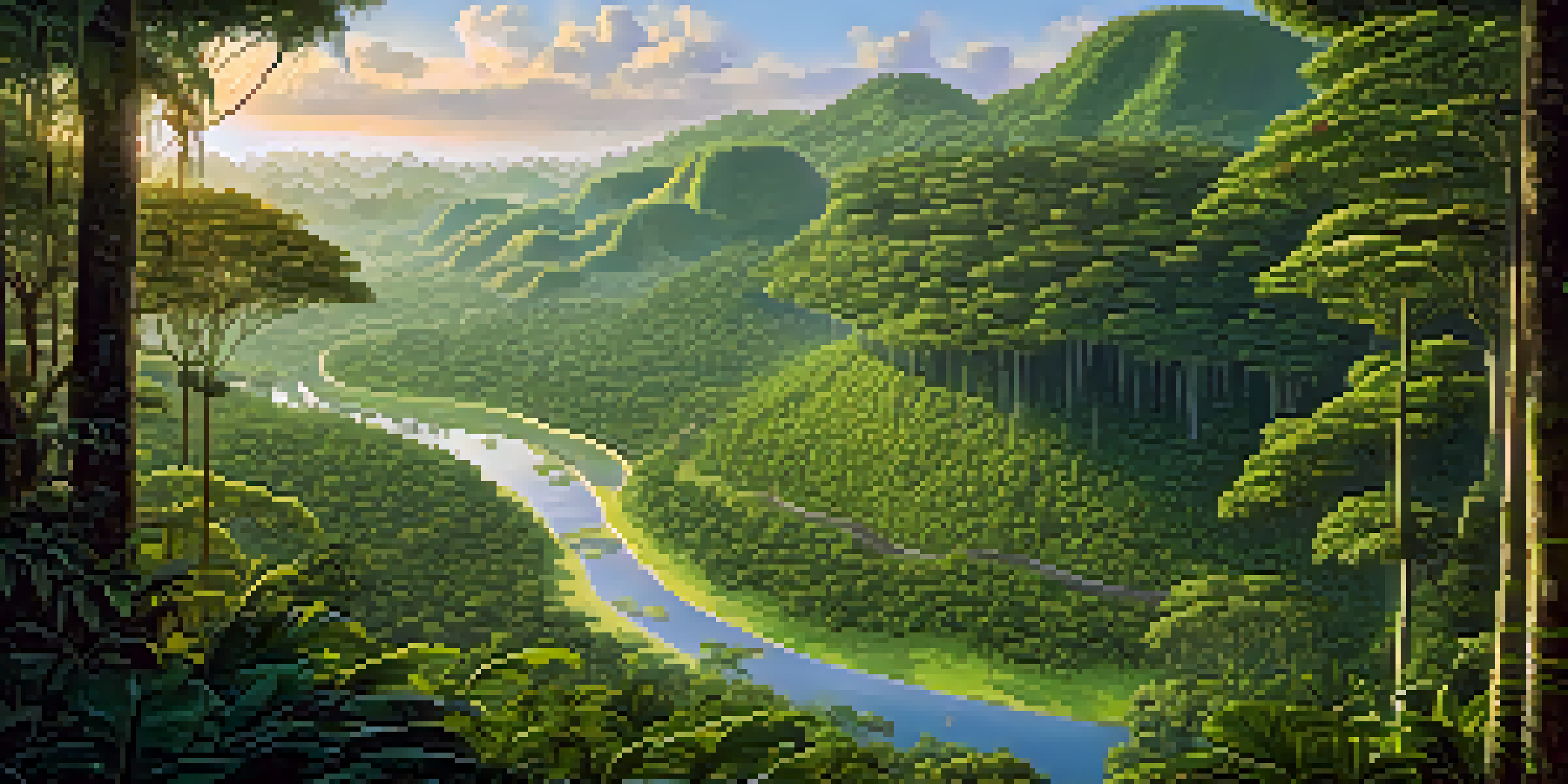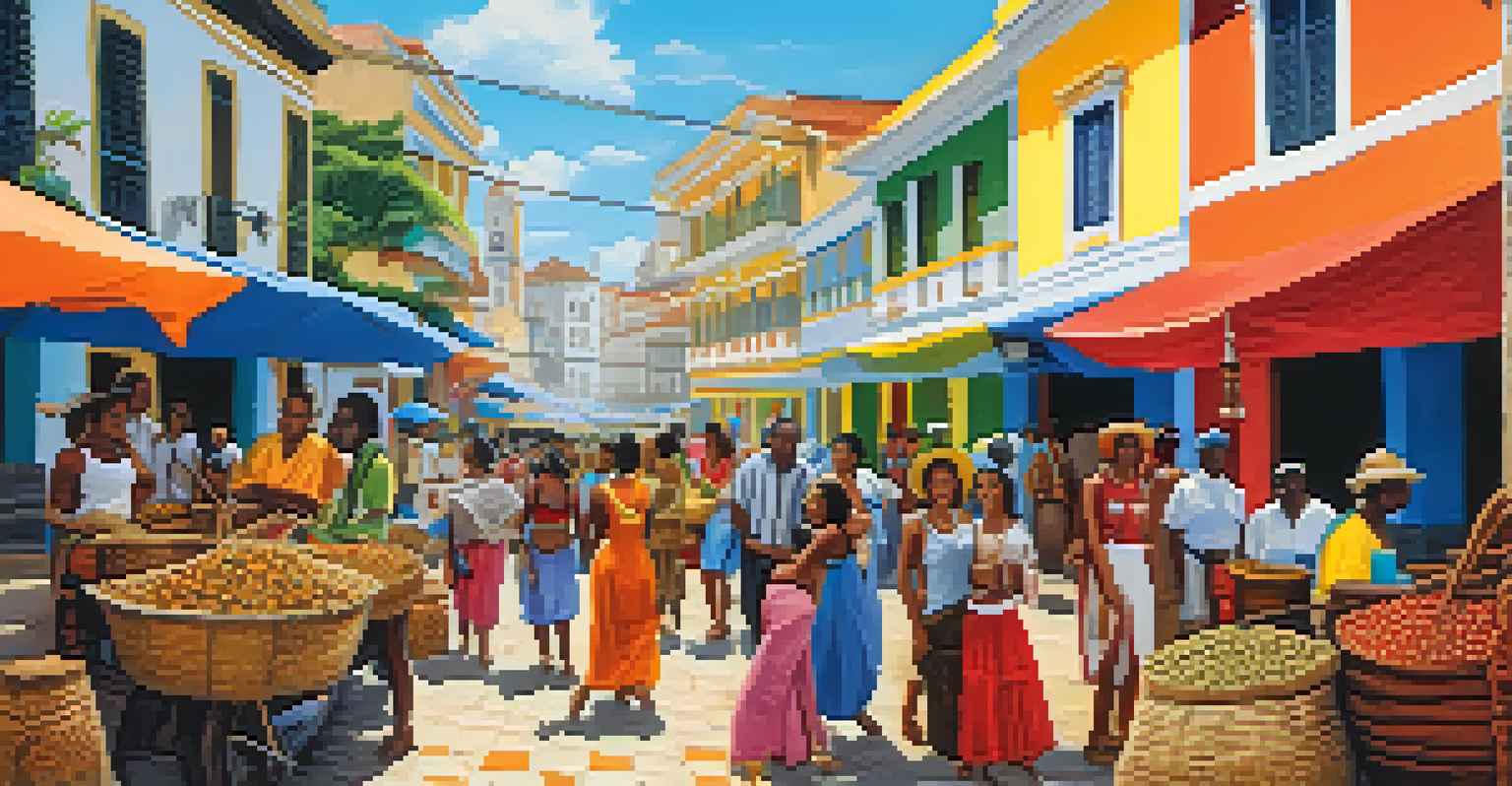Unearthing Brazil's Pre-Colonial History: Sites You Must Visit

Understanding Brazil's Pre-Colonial Era
Brazil's pre-colonial history is a tapestry woven with diverse cultures and civilizations. Long before the arrival of European explorers, indigenous societies thrived across the land, each with unique customs, languages, and belief systems. From the Amazon rainforest to the coastal regions, these communities developed complex social structures and rich traditions that are foundational to Brazil's identity today.
The preservation of our past is vital for understanding the complexities of our present.
The indigenous peoples of Brazil, such as the Tupi and Guarani tribes, played a crucial role in shaping the country’s history. They engaged in agriculture, hunting, and fishing, forming sustainable lifestyles that respected the environment. Understanding this era enhances our appreciation for Brazil’s cultural heritage, as these ancient practices continue to influence modern Brazilian society.
Visiting historical sites across Brazil allows you to connect with this rich past. It’s not just about seeing old structures; it’s about experiencing the stories and legacies that have survived through generations. Each site tells a story that contributes to the broader narrative of Brazil's pre-colonial history.
The Amazon Rainforest: A Historical Treasure
The Amazon Rainforest isn't just a natural wonder; it's a cradle of ancient civilizations. Archaeological findings suggest that sophisticated societies thrived here long before European contact. These communities managed the land through intricate agriculture techniques, including the creation of terra preta, or 'black earth,' which enriched the soil and supported large populations.

When visiting the Amazon, sites such as the geoglyphs of Acre reveal the sophisticated engineering and cultural practices of indigenous peoples. These earthworks showcase not only their environmental adaptability but also their artistic expression. Walking among these structures invites you to ponder the ingenuity of those who came before us.
Rich Indigenous Heritage in Brazil
Brazil's pre-colonial history is characterized by diverse indigenous cultures that have significantly influenced modern Brazilian society.
Exploring the Amazon offers a unique opportunity to learn about the intersection of nature and culture. Guided tours led by local indigenous communities often provide deeper insights into their history and traditions, allowing you to appreciate their connection to the land. This experience is invaluable for anyone interested in understanding Brazil's pre-colonial narrative.
The Serra da Capivara National Park: A Rock Art Haven
Serra da Capivara National Park is a UNESCO World Heritage site and a treasure trove of pre-colonial history. Home to some of the oldest rock paintings in the Americas, these artworks offer a glimpse into the lives of early inhabitants. The vivid depictions of animals, rituals, and daily activities paint a picture of a world long gone, yet still vibrant.
In every walk with nature one receives far more than he seeks.
As you explore the park, you’ll encounter thousands of petroglyphs that have withstood the test of time. These ancient artworks not only reflect the artistic skills of the indigenous peoples but also serve as historical documents. They provide valuable information about the social and spiritual lives of their creators, making this site a must-visit for history enthusiasts.
Guided tours in Serra da Capivara can enrich your experience by providing context and stories behind the rock art. Engaging with knowledgeable guides helps you appreciate the significance of these sites, fostering a deeper connection to Brazil’s past. Here, history and nature intertwine beautifully, creating an unforgettable journey.
The City of Salvador: A Cultural Melting Pot
Salvador, the capital of Bahia, is a vibrant city that embodies the fusion of cultures in Brazil. While it is known for its colonial architecture, it also holds deep roots in pre-colonial history. The city was a significant center for the indigenous Tupi people, whose influence is still felt in local traditions, cuisine, and festivals.
Walking through Salvador, you can witness the colorful blend of African, Portuguese, and indigenous cultures. The annual Festival of Iemanjá, for instance, showcases the strong African influence that has merged with local traditions, creating a unique cultural expression. This diversity reflects the historical interactions that shaped Brazil long before it became a melting pot of various cultures.
Amazon as a Cultural Landmark
The Amazon Rainforest is home to ancient civilizations that practiced sophisticated agricultural techniques, showcasing their deep connection to the land.
Visiting the city not only provides a taste of its rich heritage but also highlights the ongoing contributions of indigenous peoples to Brazilian culture. Engaging with local artisans and participating in traditional events can deepen your understanding of this vibrant community. Salvador is a living testament to the resilience and creativity of Brazil's diverse history.
The Archaeological Site of Marajó Island
Marajó Island, located at the mouth of the Amazon River, is known for its rich archaeological significance. This site was home to the Marajoara culture, which flourished between 400 and 1400 AD, leaving behind impressive burial mounds and intricate pottery. These artifacts reveal a society that was not only artistically skilled but also socially complex.
The island's unique geography played a role in the development of its inhabitants, who adapted to the challenges of living in a flood-prone region. The Marajoara people created elaborate irrigation systems to support their agriculture, demonstrating their ingenuity and understanding of their environment. Visiting the island offers a chance to witness how these ancient innovations still resonate today.
Exploring Marajó Island allows you to step back in time and appreciate the legacy of its early inhabitants. Local museums and archaeological sites bring the past to life, providing context for the artifacts on display. This connection to history fosters a greater understanding of Brazil's diverse cultural landscape and the resilience of its indigenous peoples.
The Ruins of São Miguel das Missões
São Miguel das Missões is another UNESCO World Heritage site that showcases the intersection of indigenous and colonial histories. Originally established as a Jesuit mission in the 17th century, the site reflects the efforts to convert and educate the local Guarani population. The ruins of the church and surrounding structures tell the story of both collaboration and conflict.
As you wander through the remnants of this historic site, you can sense the echoes of the past. The impressive stone carvings and architecture reveal the blending of European and indigenous styles, showcasing a unique cultural fusion. This site is not just about the Jesuit presence; it also highlights the resilience of the Guarani people in preserving their identity amidst external influences.
Importance of Indigenous Knowledge
Preserving indigenous knowledge and traditions is vital for understanding Brazil's cultural heritage and supporting the resilience of local communities.
Visiting São Miguel das Missões allows you to engage with a pivotal moment in Brazil's history. The site serves as a reminder of the complex relationships formed during colonization and the enduring spirit of indigenous cultures. It's an essential stop for anyone looking to understand the layered narratives of Brazil's past.
The Importance of Indigenous Knowledge and Preservation
Understanding Brazil's pre-colonial history goes beyond visiting sites; it also involves recognizing the importance of indigenous knowledge. Many indigenous communities today strive to preserve their languages, traditions, and lands, often facing challenges from modernization and environmental degradation. Their perspectives are invaluable for comprehending the full scope of Brazil's history and culture.
By supporting indigenous-led initiatives and tourism, visitors can contribute to the preservation of these rich histories. Engaging with local communities not only fosters cultural exchange but also helps sustain their ways of life. This collaborative approach ensures that the stories and traditions of the past are honored and passed down to future generations.

Ultimately, the journey through Brazil's pre-colonial history is a shared responsibility. By acknowledging and respecting the contributions of indigenous peoples, we can help create a more inclusive narrative that celebrates the diversity and resilience of Brazil's heritage. This commitment enriches our understanding and appreciation of a complex and vibrant culture.
Plan Your Journey to Brazil’s Pre-Colonial Sites
Planning your visit to Brazil's pre-colonial sites can be an exciting yet manageable task. Start by researching the locations that resonate most with your interests, whether it’s the Amazon, archaeological parks, or vibrant cities like Salvador. Knowing the best times to visit and understanding local customs can enhance your experience and deepen your connection to the sites.
Consider joining guided tours that focus on indigenous histories and cultural practices. These tours often provide insights that you might miss on your own, making your journey more enriching. Additionally, connecting with local communities can lead to unique opportunities to learn and engage with their traditions firsthand.
Finally, remember that each site you visit is a piece of a larger story about Brazil's past. Taking the time to reflect on what you learn and how it fits into the broader tapestry of history will not only enrich your travels but also contribute to a greater appreciation for Brazil’s diverse cultural heritage. Your journey is as much about the experiences you gather as it is about the places you see.